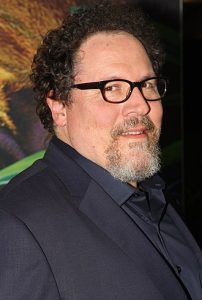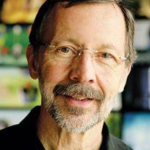Success in Film and Pharma: Contingent But Not Random

David Shaywitz
Film and pharma, like many creative endeavors, exist in a world of power law economics, where a handful of exceptionally successful products account for a massively disproportionate share of the total revenue.
Consequently, in both domains, there’s a powerful incentive to “pick winners.” Every studio head and every R&D leader tries desperately to do this.
But there’s a problem: as screenwriting legend William Goldman (The Princess Bride, All The President’s Men, Butch Cassidy and the Sundance Kid) famously observed.
“Nobody knows anything.”
The full quote, from Goldman’s classic 1983 memoir, Adventures in the Screen Trade, continues, “Not one person in the entire motion picture field knows for a certainty what’s going to work. Every time out it’s a guess and, if you’re lucky, an educated one.”
Similarly, distinguished physician-scientist and former head of R&D at Merck, Dr. Roger Perlmutter, bluntly acknowledges, “we have no idea what we’re doing,” adding, “It’s a bloody miracle if you ever make a drug that works.”

Roger Perlmutter
Revenue predictions in pharma ahead of launch are also notoriously difficult to predict, as studies by both BCG and McKinsey have affirmed. Earlier stage (pre-Phase 2) forecasts – the sort of thing former NIBR head Mark Fishman wisely banned, but current management has reinstated – seem especially fraught (see here).
Yet beneath this truth lie two conflicting realities.
- As appealing as the narrative of drug development moving gracefully between biology and clinic is, with “line of sight” thinking and guided by a target product profile, the actual process tends to be far messier, particularly in the case of novel mechanisms;
- Even though a huge number of lucky breaks are required to achieve a blockbuster, this does not mean that such success is simply random, equally available to anyone who buys a lottery ticket. Talent, taste, and teamwork are vital as well, not to mention judgement and determination.
The real lesson is that in power law domains like film and pharma, success is incredibly difficult to achieve. You need both a huge amount of good fortune and a team that actively seeks opportunities to benefit from serendipity.
A good team has the mindset, competence, and agility to leverage effectively whatever luck comes their way.
Path To A Blockbuster Drug: Messier Than You’d Think
In a fascinating recent interview, R&D productivity scholar Jack Scannell (of Eroom’s Law fame) discusses what might be called the noble lie of drug development: the conceit that we have the ability to understand adequately and domesticate reliably biology. Nassim Taleb and I wrote about this in the Financial Times in 2008.
Scannell explained that to advance a candidate medicine in a drug development organization, you need a very clear and crisp story of why you think it’s going to work, in order to compete successfully for resources. He also notes that every time a drug is successfully developed, there’s always a just-so story explaining why the process worked.

Jack Scannell
The problem, Scannell accurately points out, is that these narratives evolve over time – an approach that in retrospect seems logical and methodical (and hence, presumably, repeatable) yet was almost certainly far less structured and streamlined in practice.
If there’s a canonical path for drug development, many first-in-class medicines never got the memo. Scannell cites the example of anti-TNF drugs, which were initially developed for sepsis; they didn’t work. Only later were anti-TNF candidates tried in inflammatory conditions like rheumatoid arthritis; products in this category today include Humira (cumulative global sales of around $200B) and Enbrel (cumulative sales of around $74M as of 2021, estimated to hit $100B by 2029).
Similar examples abound. Botox (as I’ve discussed, see here, here) was originally developed and FDA-approved as a medicine for strabismus; sildenafil (Viagra), famously, entered clinical trials as a potential treatment for angina.
Pembrolizumab (Keytruda), Merck’s blockbuster oncology drug, as I discussed in depth here, was initially developed by researchers at Organon Pharmaceuticals in Oss, the Netherlands, as part of a hunt for an inhibitor of the immune system to help patients with autoimmune disease.
When a stimulator (technically, an inhibitor of an inhibitor) was discovered instead, researchers contemplated a range of uses including as an anti-viral medicine and as a vaccine enhancer, before setting on developing it as a potential cancer medicine. Even so, it was effectively invisible to the R&D leadership of multiple companies for years, including Merck which was on the edge of out-licensing it, only pulling it back in at the last moment.
Or consider my former employer, Takeda, which acquired Millennium Pharmaceuticals in 2008 for $8.8 billion in order “to bolster its cancer drug business,” according to Reuters. At the heart of this transaction was bortezomib (Velcade), a cancer drug Millennium acquired when it bought Leukosite in 1999 for its pipeline, most notably a share the drug Campath (later sold to ILEX which was then acquired by Genzyme). At the time of the acquisition, Millennium “had no interest in bortezomib,” and was effectively unaware of its existence.
Leukosite, for its part, had acquired bortezomib from a company called ProScript after it ran out of money; ProScript, meanwhile, began life as Myogenics, a company co-founded in 1993 by Harvard scientists Alfred Goldberg, Tom Maniatis, Kenneth Rock, and Michael Rosenblatt. The company was focused on targeting the proteosome, which is involved in protein degradation. The original goal was to help treat disorders of muscle wasting, hence the name. But in 1994, after a compelling conversation with Israeli researcher and future Nobel laureate Avram Hershko, the startup’s head of research, Julian Adams, decided to pivot to cancer (and change the company’s name to ProScript).
As Goldberg later reflected, “Most scientists do not realize how the progress of drug development depends so much on nonscientific issues and random events — and luck.”
The broader point is that while both Velcade and Keytruda are important oncology medicines ultimately developed successfully by Millennium and Merck, respectively, the origin and early evolution of each was incredibly messy, and effectively the antithesis of the carefully scripted process we might have been tempted (or seduced) to imagine.
Similarly, anti-TNF medicines weren’t initially developed to treat rheumatoid arthritis, Botox wasn’t developed to treat wrinkles, sildenafil wasn’t developed for erectile dysfunction. Moreover, as Morton Meyers documents in Happy Accidents (see my discussion here), many categories of medicines used in psychiatry were originally discovered through astute clinical observation rather than deliberate drug design focused on the particular indication.
Path To A Blockbuster Film Franchise: Messier Than You’d Think
The Marvel Cinematic Universe (MCU), featuring Spiderman, X-Men, Iron Man, The Hulk, Thor, Captain America, Black Widow, and many others is the single most successful franchise in movie history, netting nearly $30B in global box office so far, and much more in associated licensing. These are impressive numbers even by pharma standards.
Much like the eventual success of Keytruda and Velcade, the triumph of the MCU was hardly inevitable, as a fascinating new book, MCU, and an engaging Wall Street Journal podcast series, “With Great Power,” both reveal.
Marvel Comics, founded in 1939 as Timely Comics, enjoyed its heyday in the 1960s, as writer Stan Lee led the development of such memorable characters as the Fantastic Four, X-Men, Spiderman, Ant Man, and Iron Man, among others. After a series of financial transactions starting in 1968, Marvel wound up in the hands of corporate raider Ronald Perelman in 1989. Perelman, in turn used the company as a vehicle to acquire other companies including a sports card company and a sticker company, loading up Marvel with extensive debt.
In 1990, Marvel sold licensing rights to ToyBiz, a company owned by entrepreneur Ike Perlmutter, an emigree from Israel who had made his fortune in the U.S. as a liquidator, buying products from failing businesses and selling them to consumers at a small markup. The profits from this enabled him to acquire and turn around distressed companies instead of products; for example, he acquired and later flipped Caleco to Hasbro, pocketing $40 million in the process.
In 1990, Perlmutter acquired the struggling toy maker ToyBiz, and hired inventive toy creator Avi Arad (another Israeli emigree) to help the company come up with new products. Having watched the sales of Batman toys go through the roof with the release of Tim Burton’s Batman in 1989 (ToyBiz had a non-exclusive license to DC characters), Perlmutter pursued and acquired the exclusive rights to Marvel characters from Perelman. The sales of these were sufficiently encouraging to encourage Ike to strike a new deal with Perlman in 1993: Marvel would get 43% of ToyBiz and in exchange, ToyBiz would gain exclusive licensing rights for all Marvel characters into perpetuity.
To support Marvel’s struggling balance sheet in 1993-1994 – and to stimulate the sale of toys – Marvel, in a deal led by Arad, sold the movie rights to X-Men and the Fantastic Four to 20th Century Fox. But Marvel couldn’t stave off the inevitable, and in 1996, the company declared bankruptcy, with the intention of restructuring their debts.
Unexpectedly, a fight ensued between Perelman and another well-known corporate raider, Carl Icahn. In 1997, ToyBiz abruptly parachuted into the middle of this dispute with an unsolicited offer of their own to acquire Marvel, showing up uninvited to a meeting of creditors to make their pitch. After a lengthy legal fight, ToyBiz was awarded the business in 1998.
The future of Marvel was now in the hands of a toy company.
Desperate for cash, Perlmutter soon cut a deal for Spiderman with Sony (who already owned a sliver of the rights, from an earlier tractions). Marvel received $10 million plus 5% of the profits – in addition to whatever they made from any Spiderman-related toys. The movie, which came out in 2002, did fairly well, achieving a box office of more than $100 million. When Perlmutter saw this, he was furious, and decided he gave away too much to Sony in this transaction.
In 2003, a savvy young business whiz named David Maisel met with Perlmutter and floated what was a radical idea at the time: perhaps Marvel could make its own movies, rather than just license the rights to others. By controlling the production, Maisel said, they could better coordinate the timely development and sale of movie-related toys, which was always what Perlmutter saw as the key source of revenue.
Maisel eventually persuaded Merrill Lynch to provide $525 million, enough to make two movies; as collateral for this, Marvel offered up movie rights to a broad portfolio of their characters. After conducting focus groups with children, Marvel decided that the most popular toy would be one based on Iron Man, and so this was nominated to be the movie they filmed first.
Overseeing this project would be a Marvel fanatic named Kevin Feige, who was hired by Arad in 2000 after seeing Feige’s contribution to an X-Men movie that was made in the late ‘90s and released in 2000, produced by Lauren Shuler-Donner, for whom Feige was working as an assistant at the time.
Feige and Maisel, in turn, both selected Jon Favreau to direct Iron Man. This was critical to the movie’s eventual success, not least because Favreau identified Robert Downey Jr as the ideal actor to portray Tony Stark, and then passionately advocated for him despite Perlmutter’s strenuous objections (Downey was considered a risky choice because of his well-known history of substance abuse).
Favreau eventually won, Downey joined the cast, and other talented actors and crew members were soon drawn by Downey’s presence. Downey turned out to be perfect for the role, the movie was an enormous success, and the franchise was launched, steered by Feige’s vision for an integrated series of films all taking place in a coherent universe – the MCU.

Jon Favreau
Interestingly, Favreau got the opportunity to direct Iron Man in part because of his success directing the 2003 Christmas classic Elf, starring Will Ferrell. Favreau had heard about Elf in 2001 when he was guest directing an episode of a TV show called Undeclared, created by Judd Apatow, who shared a manager with Ferrell. The TV show opportunity, in turn, resulted from the success of his 1996 cult classic, Swingers – a film that he wrote in less than two weeks after his dad sent him screenwriter software and for amusement, he thought he’d try it out.
Favreau barely managed to get Swingers financed (ultimately a friend of the director’s father ponied up $200,000). He struggled to film the picture on this tiny budget, relying on friends, spare supplies, and unpermitted locations often requiring guerilla filming tactics to complete a take rapidly before he was kicked out.
In short: the MCU was launched from the success of Iron Man, driven largely by the appeal of Robert Downey Jr, who was cast only because director Jon Favreau had insisted, and Favreau was in the director’s chair only because of a remarkable series of fortunate events.
Contingent but not Random
While the successful development of blockbuster movies and medicines clearly requires a huge number of unplanned and perhaps unplannable things to go right, their successes, critically, are not random either.
Luck may be necessary, but it’s hardly sufficient.
The launch of the MCU, for example, clearly involved an exceptional amount of luck but it also required extremely talented people, in this case a balance sheet-focused business executive, Ike Perlmutter, joined by the creative Avi Arad; a visionary finance strategist, David Maisel; an imaginative, ultra-high-EQ subject matter expert, Kevin Feige; and a director with great taste and an expansive network, Jon Favreau.
It would be a mistake to attribute the coalescence of this team to dumb luck. Feige, for example, had attended film school at USC after applying six times (he was rejected the first five), and then pursued an internship with the Hollywood power couple of Laura Schuler-Donner and Richard Donner (Richard had directed the 1978 film Superman, starring Christopher Reeve).
Maisel, drawn to the entertainment business, had apprenticed with legendary superagent Michael Ovitz after first attending Harvard Business School and spending time at the Boston Consulting Group. Favreau, meanwhile, had spent years hustling in Chicago and Los Angeles as an aspiring actor and director; bit parts include “D-Bob” in Rudy (1993), and “Eric the Clown” on an episode in the fifth season of Seinfeld (1994).
In Outliers (my WSJ review here), Malcolm Gladwell discusses underappreciated factors that can contribute to success, such as hours of practice and hard work. As I noted, “For the Beatles, the hard work of marathon engagements in Hamburg’s red-light district early in their careers was crucial. ‘By the time they had their first burst of success in 1964,’Mr. Gladwell writes, ‘they had performed live an estimated twelve hundred times. Do you know how extraordinary that is? Most bands today don’t perform twelve hundred times in their entire careers.’” Similarly, Bruce Springsteen, in his captivating autobiography, cites his years of experience in a bar band as critical for his later success.
Seth Stephens-Davidowitz, in Don’t Trust Your Gut (see my discussion here), also examines how artists can increase their exposure to serendipity by getting themselves out there rather than waiting to be discovered. Maisel, Feige, and Favreau, in evolving their careers, all seem to have chosen, deliberately, to put themselves in the path of serendipity, maximizing their chance to get lucky. Maisel worked with Ovitz, Feige went to USC film school and then worked with Schuler-Donner, and Favreau keeping himself in the mix as an actor (and later director), as frustrating as that must have felt for most of his early career.
The success of Keytruda and Velcade, also, required more than just good luck. While Merck’s head of R&D Roger Perlmutter wasn’t responsible for the Keytruda’s discovery and early development, he soon recognized the promise of the drug, and ensured Merck was all-in on its development, independent of whatever his (and Merck’s) preexisting strategic plans might have been. Similarly, the championing of Velcade by Julian Adams was essential to its development — not least his role in persuading a skeptical Millennium to resource it after the acquisition of Leukosite.
What Is To Be Done?
On an individual level, it seems like a good idea to stay in the mix as much as possible, not least because the people you work with on a failed program today might be some of the same people you might work with on a successful drug tomorrow, and the skills and instincts you develop along the way in the trenches enable you to become increasingly effective, assuming you are curious, industrious, and collegial.
On a company level, it’s more complicated. Most large pharmas are built around a degree of planning and projection that works beautifully in Excel and Powerpoint. However, the approach generally doesn’t meaningfully acknowledge, much less come close to describing, the messy reality of novel product development.
This discrepancy suggests there must be an incredible arbitrage opportunity here for more agile leaders and nimbler organizations, and presumably this is what venture-backed biotech start-ups are effectively doing. It’s not surprising to learn that only a quarter of new approvals in big pharma originated in-house, and unless big pharma can truly figure out how to industrialize and brute-force innovation, I’d be surprised to see big pharma’s in-house number go anywhere but down.
Stay Humble
It seems only appropriate to conclude a piece around uncertainty with several humbling reminders.
As Judah Folkman, a pioneering surgeon-scientist and a great champion of innovation at Harvard famously observed, “If your idea succeeds, everybody says you’re persistent. If it doesn’t, you’re obstinate.”
In other words: to pursue any idea, at some point, you have to just put your head down and go after it; the problem is you have no way of knowing until afterwards whether you were right.
This lesson has particularly poignancy in the case of Folkman, who is perhaps best known for advancing the thesis that to grow beyond a certain size, cancers need to acquire their own blood supply, and if you can inhibit the grow of new blood vessels – for example, with drugs targeting VEGF — you might be able to starve and kill cancers.
It now seems, as Scannell points out in his interview, that these anti-VEGF cancer medicines, like Avastin, might work in other ways. As MGH cancer researcher Rakesh Jain wrote in 2014, these “agents could transiently ‘normalize’ the abnormal tumor vasculature, resulting in improved blood perfusion,” and helping other anti-cancer treatments (both drugs and radiation) work better.
Thus, the medicines Folkman was championing might work, but perhaps not for the reasons he thought.

Ed Catmull
We might give the last word to former Pixar CEO Ed Catmull, who wrote an entire book, Creativity, Inc., about the challenges of serial creativity, and the need to successively reinvent yourself each time (see my discussion here).
While readers “often thanked him for sharing his formula for surefire creative success,” the Wall Street Journal reported in 2023, the book conspicuously makes the opposite point: there isn’t “a template” for success – at best, he allows, there is perhaps “a way of thinking.”
Catmull’s insight bears repeating: inconveniently, there just isn’t a ready formula for creative success. Catmull was talking about original movies in particular, but he could just as easily have been discussing original books, songs, drugs, or even venture investments, which all obey power law dynamics.
Even if you are part of a team that has delivered an outsized success, or the CEO of the organization responsible, it doesn’t mean that you can now apply what you’ve learned and simply do it again, or that your organization can now apply these tidy “lessons learned.”
I find it liberating to recognize that there isn’t a secret formula for innovative success in pharma (or any other creative domain ruled by the power law). It means we don’t need to distract ourselves wondering whether we are doing it “right,” or worry if we’re not following the putative example of previous successes (which would be particularly misguided given the post-hoc narrative biases Scannell describes).
Novel, impactful medicines – like novel, impactful films – are incredibly difficult to create, and require an exceptional amount of luck.
What we can control, however, is how we approach this challenge: with authentic intellectual curiosity, and colleagues who are talented, inquisitive, and nimble, approaching their work with conviction yet able to pivot in response to new information.
True, we may not succeed. Yet as screenwriter Charlie Kaufman observed, “If you don’t risk failure, you’re never going to do anything that’s different from what you’ve already done or what somebody else has done.”





